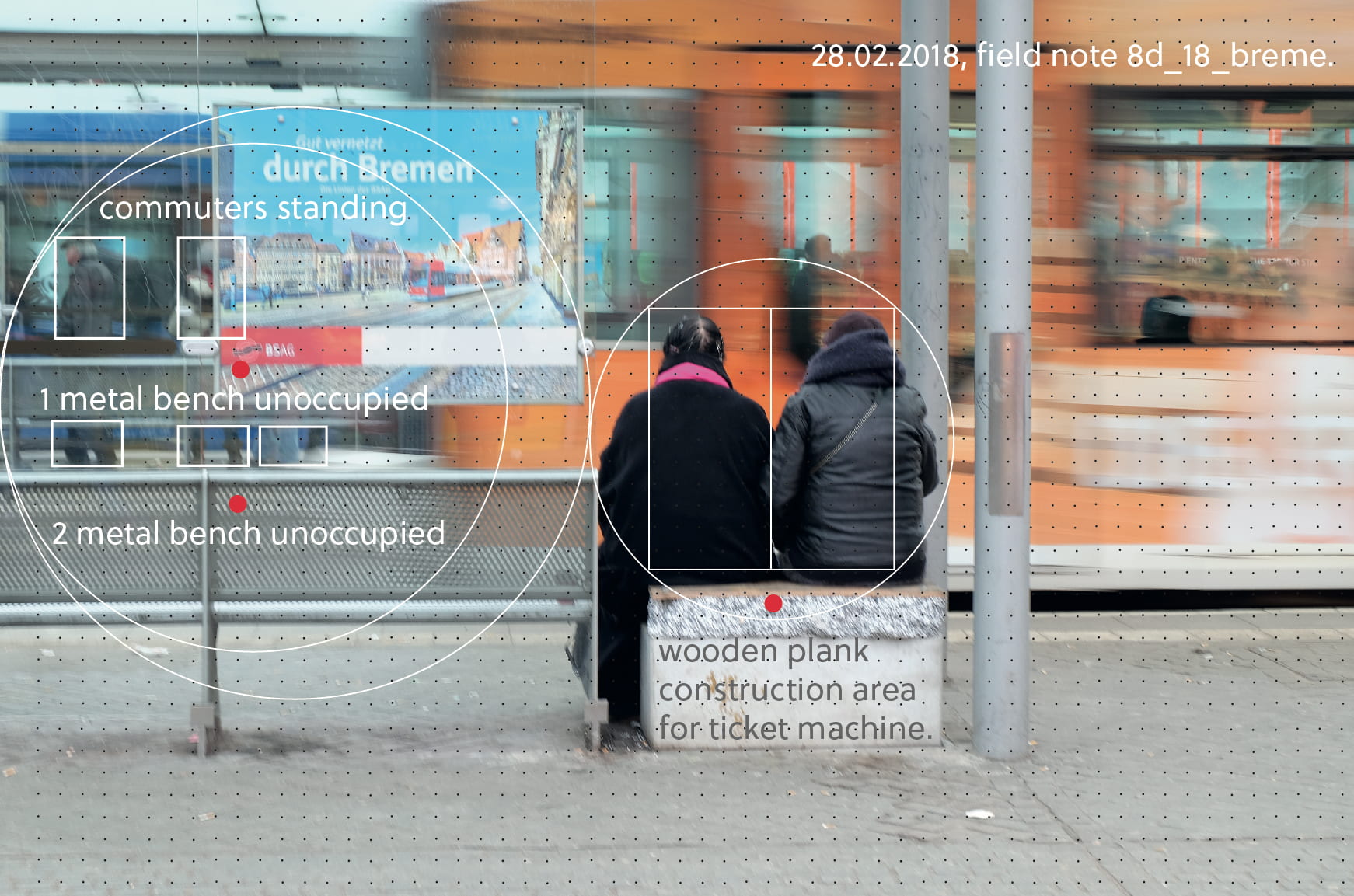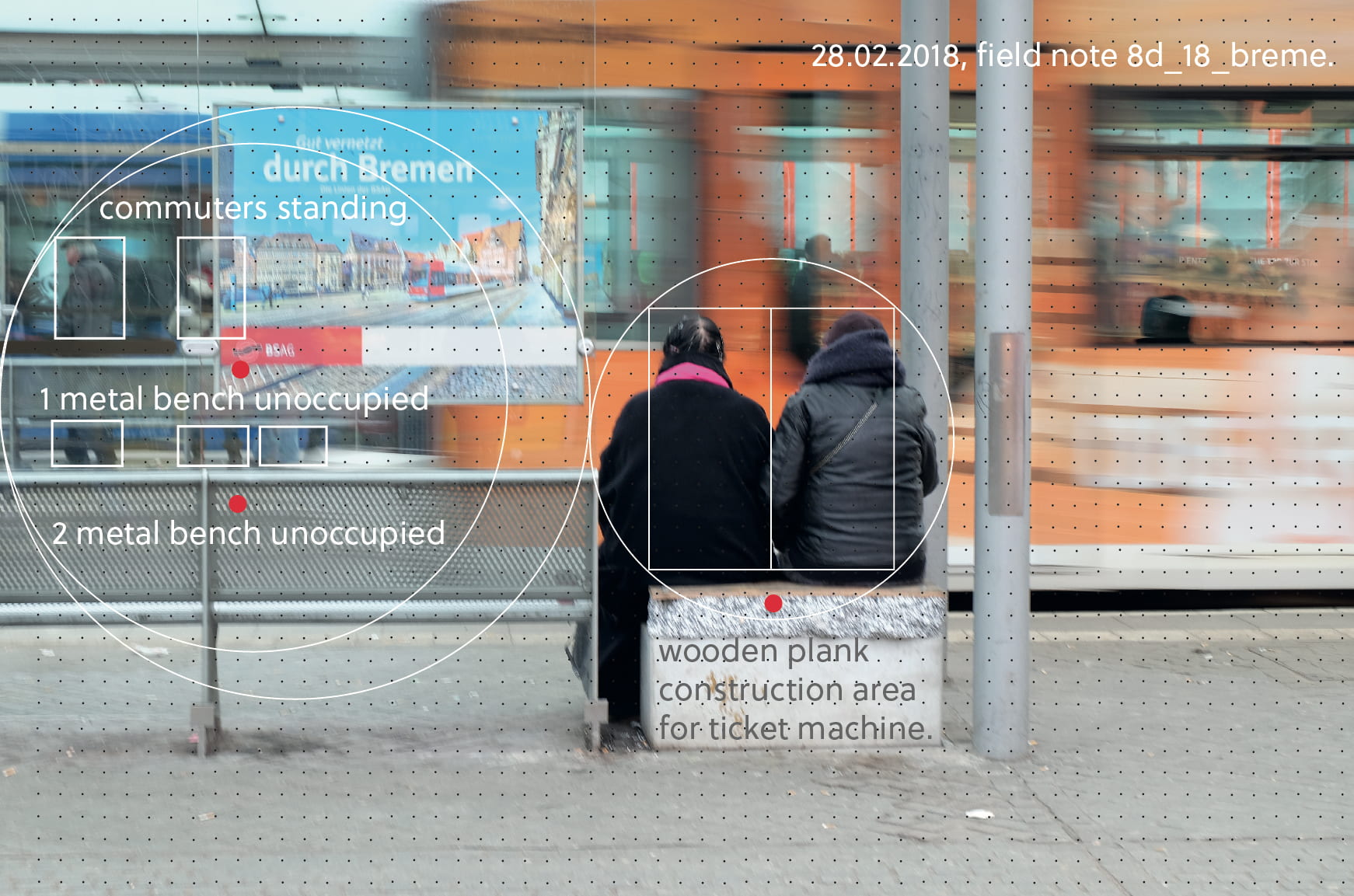The Immersive Behavioural Observation (IBO) method.
The Immersive Behavioural Observation (IBO) method is used to study the behavioural and tacit patterns of users in their natural environment. It is used when other obtrusive methods like questionnaires and dialogue, that involve direct participant contact, are not helpful for data collection. The IBO method generates ‘circumstantial evidence’. For this purpose, data collection procedures such as surveys, questionnaires, etc., may not be effective, first because they interrupt the flow of activity of the commuter, thus becoming obtrusive to the conditions of observation, and second because asking users about their experiences might not always produce a valid and accurate reply. The IBO method thus attempts to compensate for what Zeisel and others call a foundational lack of standardised procedures for observing and interpreting by building in a theoretical framework.

This is achieved by bringing a procedural clarity to the method, by identifying and defining the major components and the processes of the method: demarcation, documentation and decoding. The results are then validated through an agile dialogue. In a way, this is what IBO tries to do: to observe the interaction, in this particular case between the human and the material within spaces in flow. But in order to understand the complex relationship between the user and the built environment, to simply look at it is not enough. This is the reason why the observation in IBO has to be immersive, so as to partake in it via the medium of the lived body. IBO investigates the relationship between the lived body and its interaction with the materiality of the built environment, via sharing the same chronotope as the observed. Here, the processes of immediate experience and intuition gain a certain significance in comparison to abstract rationalism and scientific approaches to understanding reality.
To read Shalini’s full paper, please click below to view the attached PDF.

